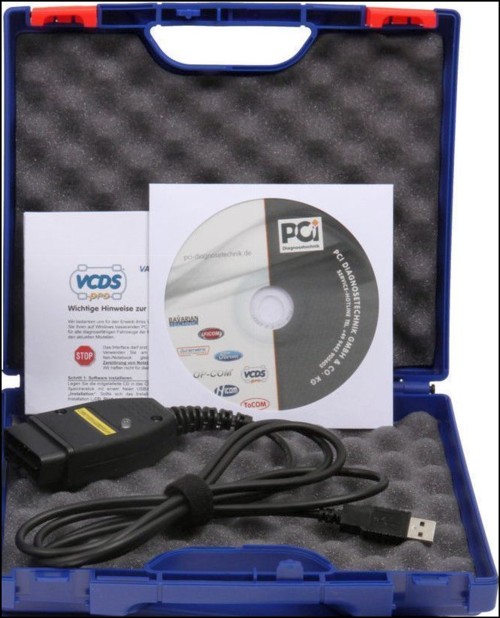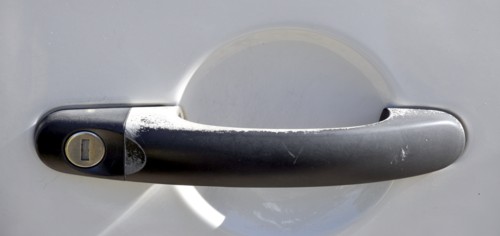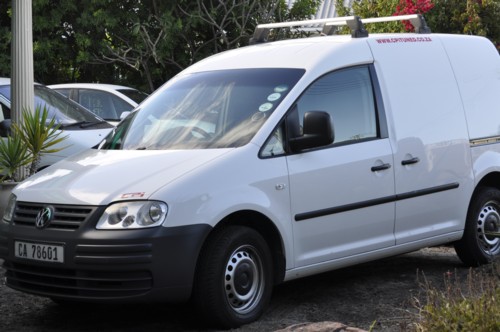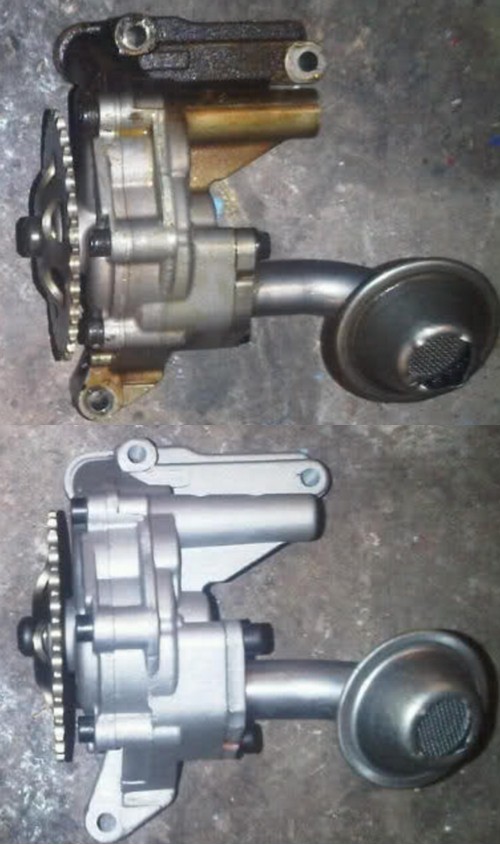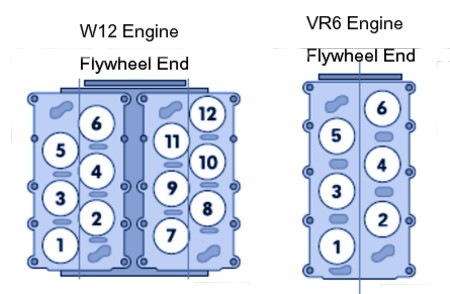VCDS
AUTOMOTIVE DIAGNOSTICS
Over the past few years, I've often referred to VCDS and diagnostic scans in my blogs. For the life of me, it never dawned on me that the vast majority of Volkswagen, Audi, Seat and Skoda vehicle owners have no idea what it is, have never heard of VCDS, let alone know what it does. Some has never even seen a diagnostic scan of their own car. I sincerely apologize for the confusion it may have caused. So the rest of this installment will be devoted to explaining what VCDS is, specifically for the benefit of the masses. But before I do so, I need to sketch a picture as to why car manufacturer are obligated by law to install on-board diagnostic OBD systems into each and every car they manufacture.As long ago as 1946 the State of California (USA) realized that automotive vehicles significantly contributed to the rising levels of air pollution, and passed legislation to establish 'air quality emission standards for motor vehicles'. It is noteworthy, that the very first Volkswagen emission controlled engine was in fact the 1963 Type I VW Beetle engine. It employed a system known as Positive Crankcase Ventilation (PCV) to control its crankcase emissions. During the 1970's the United States Environmental Protection Agency raised concerns over the general degradation of air quality, though they were especially concerned over the health and environmental impacts of NOx.
NOx is an abbreviation that refers to the entire family of nitrogen oxides, among which are nitrogen dioxide, nitrous oxide, nitrates, nitric oxide and nitric acid . NOx is known to aggravate asthmatics, can cause lung tissue diseases and reduction in overall lung function. When NOx reacts with and sulfur dioxide and other substances in the air, it eventually comes down to earth in the form of acid rain. Acid rain is damaging our vegetation by reducing our crop yields substantially. It also causes our lakes and streams to become acidic which is totally unsuitable to many varieties of fish, shellfish and other aquatic plants and animals. Nitrous oxide emissions also add to the already high level of greenhouse gas responsible for the gradual rise in the earth’s temperature — aka global warming. But that's, just the tip of the ice-berg, because the issue is far worse and is of serious concern. In a nutshell the Federal and State Clean Air Act galvanized the rest of the world in the consciousness to reduce their carbon footprints.
As a follow up to Positive Crankcase Ventilation (PCV) of 1963, various parts of the automotive fuel and ignition systems were modified in an effort to reduce exhaust emissions. New systems were also added while existing systems were modified to reduce fuel tank ventilation system, tailpipe and crankcase emissions. Electronics was introduced and CDI (capacitive discharge ignition) systems made their appearance and overtime technology further transformed the four-stroke internal combustion engine. Carburetors and mechanical fuel injection gave way to hydraulic / electronic fuel injection. Coils, points and condensers gave way to contact-less electronic ignition systems, introduced by Bosch. The Bosch D-Jetronic system was followed by Bosch K-tronic, then the Bosch Digifant. At some point the electronic ignition system and the electronic fuel injection were combined which gave rise to the Bosch Motronic engine management system.
The main objective of an engine management system is to accurately control the fuel flow and the ignition timing whilst keeping emissions to a minimum. Though various other support systems are needed to make the combustion process occur continuously. For example, crank drives the valve-train that operates the valves, the lubrication system pumps the oil to keep the engine from overheating, the cooling system reduces heat of the oil using the radiator and fan, and the electrical system supplies the voltage and current. This allows the engine management system to deliver the exact quantity of fuel, and delivers a spark at the precise moment to match the air demands of the engine — the stoichiometric ratio.
All this technology, with the help of the IEEE, led up to the first generation OBD (On-board Diagnostics) that used Diagnostic Trouble Code (DTC) retrieval via blink code. During the successive years further legislation was put into place, meanwhile OBD matured and superseded by the stringently modified OBD-II (On-board Diagnostics 2nd generation) which has been around since 1996. In Europe OBD-II is known as EOBD-II and the emission scandal involving Volkswagen AG since 2014 revolves around them lying about the amount of CO2 emitted by their cars and for fitting a cheating device to some of their both diesel and petrol vehicles, that actually failed its 'readiness test'.
The Readiness test is essentially a group of eight (8) electronic monitors (circuits) that oversees the correct functioning of various emission related components fitted into all modern day cars. Each of these operational test needs to be within the legislated specification. When there is a problem with any one monitor, it will set a binary "1" in the readiness code. If there is no problem or it passes a test, it would set a binary "0" in the readiness code. Even though emission monitoring was the imputus for OBD-II, it wasn't limited to emission monitoring. Since a computer ECU (electronic Control Unit) was needed to oversee the emission monitors, it was expedient to put it to other uses as well, like engine management.
As such, the electronic control unit (ECU) was renamed Engine Control Unit (ECU). The computing power of the ECU was underutilized, since its cost certainly wasn't justified by the 8 menial tasks of emission monitoring, so manufactures started adding bells and whistles and other creature comforts. The ECU increased from a 38 pin version to and 80 pin version in a matter of years. The ECU can store information and has a non-volatile memory where it stores the DTC (Diagnostic Trouble Codes) whenever it detects a problem. The ECU also has another memory where it stores maps of the driver's driving peculiarities which is erased when the battery is disconnected. The driver is also alerted when there is a problem by one or more instrument panel lights that turn on, or start to blink. When this happens a trouble code is stored which can assist the mechanic in solving the problem.
The bells and whistles were so many that their control needed to be grouped and separated and the rest of the control modules were introduced. Hence ECU (Engine Control Module, TCM (Transmission Contol Module), ABS (Antilock Braking System) module combined with EDL (Electronic Differential Lock), ASR (Anti Slip Regulation) and EDL (Electronic Differential Lock), Central Electronics Module, Airbags Module, CAN Gateway Module, Instrument Module, Central Convenience Module, Seat Memory Module, Xenon Module, Auto HVAC Module, Interior Monitor Module, etc...
These modules are also distributed throughout the car, sometimes placed in the most obscure places with very limited access; and all these modules are also networked (interconnected) on a bus system called CAN Bus. Individual modules have also been given some sort of intelligence (protocol) so that they can interface with diagnostic equipment. To simplify, it can be compared to a land line telephone extension that can communicate with the switchboard using internal control codes. Each module has its "own telephone number" with the gateway module acting as the switchboard and when a diagnostic device is connected, it can communicate with the requested module via the gateway exchange.
Having this glut of electronic modules on-board means a glut of sensors and a glut of actuators that accompany them; amongst which are the Engine Crank or Cam Position/Speed sensor, Intake Air Temperature (IAT) sensor, the Throttle position, the Coolant Temperature (CLT) Sensor, the Throttle Valve Control Motor, the cooling fan motor (actuator), the Fuel Pressure Regulator (actuator), the Injectors (actuator), the ignition coil (actuator) and the Oxygen Sensor (O2S) (actuator), to mention but a few.
With all these extra electronics devices that can go faulty or rather will go faulty at some time or the other, they will need to be repaired; and since circuit board level repairs are done at a fairly high level, beyond the abilities of average auto technician, hobbyist mechanical or DIY car owner, module replacement is the only option. In order to determine which component has gone faulty and which module is responsible for controlling it, without some sort of diagnostic device is near to impossible.
So as part of the OBD-II standard, was that vehicle manufactures were obliged to install a diagnostic port in the drivers cockpit area for such diagnostic equipment to interface with the Gateway Module. This port is called the DLC (Data Link Connector). And that's were the VCDS cable plugs into. The VCDS software allows you select your vehicle from a list of VAG vehicles then gives you an option the autoscan. The scan below is a sample of what can be expected, except that if there is a problem with the vehicle, it will be highlighted in red. Were you see 'No fault code found' is where the fault codes will be listed. The P codes can then be analysed / interpreted and the necessary repairs can be carried out.
SAMPLE SCAN
Chassis Type: 9N (9N - VW Polo (2002 > 2010))Scan: 01 02 03 08 09 15 17 19 25 37 44 45 46 56 76
VIN: AAVZZZ9NZ8U0XXXXX Mileage: 221080km/137372miles
-------------------------------------------------------------------------------
Address 01: Engine Labels: None
Part No SW: 03C 906 057 AK HW: 03C 906 057 M
Component: BOSCH ME7.5.20 0707
Revision: 21H01--- Serial number: VWZ7Z0G555XXX
Coding: 0000075
Shop #: WSC 31414 000 00000
No fault code found.
Readiness: 0000 0000
-------------------------------------------------------------------------------
Address 02: Auto Trans Labels: 09G-927-750.lbl
Part No SW: 09G 927 750 GH HW: 09G 927 750 GH
Component: AQ 250 6F 0930
Revision: 00H67000 Serial number:
Coding: 0000072
No fault code found.
-------------------------------------------------------------------------------
Address 03: ABS Brakes Labels: 6R0-907-37x-ABS80.lbl
Part No SW: 6Q0 907 379 AF HW: 6Q0 907 379 AF
Component: ABS 8.0 front H05 0002
Revision: 00000000 Serial number: 00000000000000
Coding: 0002292
No fault code found.
-------------------------------------------------------------------------------
Address 08: Auto HVAC Labels: 6Q0-820-045.lbl
Part No: 6Q0 820 045
Component: Klimaanlage X0850
No fault code found.
-------------------------------------------------------------------------------
Address 09: Cent. Elect. Labels: 6Qx-937-049-C.lbl
Part No: 6Q0 937 049 F
Component: 0009 BN-SG. 2S36
Coding: 17550
Shop #: WSC 31414
No fault code found.
-------------------------------------------------------------------------------
Address 15: Airbags Labels: 6Q0-909-605-VW5.lbl
Part No: 6Q0 909 601 F
Component: 05 AIRBAG VW5 0010
Coding: 12341
Shop #: WSC 31414
No fault code found.
-------------------------------------------------------------------------------
Address 17: Instruments Labels: 6Q0-920-xxx-17.lbl
Part No: 6Q0 920 825 P
Component: KOMBIINSTRUMENT VDO V06
Coding: 00141
Shop #: WSC 31550
No fault code found.
-------------------------------------------------------------------------------
Address 19: CAN Gateway Labels: 6N0-909-901-19.lbl
Part No: 6N0 909 901
Component: 01K1 GATEWAY CAN 2S36
Coding: 00015
Shop #: WSC 31414
No fault code found.
-------------------------------------------------------------------------------
Address 25: Immobilizer Labels: 5J0-920-xxx-25.clb
Part No: 6Q0 920 825 P
Component: IMMOBILIZER VDO V06
Coding: 00141
Shop #: WSC 31550
No fault code found.
-------------------------------------------------------------------------------
Address 44: Steering Assist Labels: 6Q0-423-156.clb
Part No: 6Q0 423 156 AB
Component: LenkhilfeTRW V270
Coding: 10110
Shop #: WSC 31414
No fault code found.
-------------------------------------------------------------------------------
Address 45: Inter. Monitor Labels: 6Q0-951-171.lbl
Part No: 6Q0 951 171 C
Component: Innenraumueberw. 0020
No fault code found.
-------------------------------------------------------------------------------
Address 46: Central Conv. Labels: 6Q0-959-433.lbl
Part No: 6Q0 959 433 E
Component: 67 Komfortgerát 0002
Coding: 00018
Shop #: WSC 31414
No fault code found.
End ---------------------------------------------------------------------
VCDS
VCDS stands for "VAG-COM Diagnostic System" and it is a dongle based hardware cable sold by Ross-tech governed by intellectual property rights. It pairs with Ross-tech's freely downloadable and regularly updated Windows based computer program that interrogate your vehicles on-board modules. However, the software needs to be registered on-line in order to take benefit from the regular upgrades. This software provides a GUI with menus to scan the vehicle, that allows you to view Fault Codes, Measuring Blocks and view VAG-Scope data. It also permits you to clear any Fault Codes, and recode a module after replacing it, log Data to a CSV file, perform Basic Settings and Output Tests. And so much more. It is probably the most versatile tool to tackle any Volkswagen, Audi, Seat or Skoda repairs. Any auto workshop specializing in VW vehicles that doesn't have VCDS is at a loss, even if they have a Launch X431, or TOAD, or Autoboss V30, the MaxiDAS DS708, etc. VCDS is specific to VAG vehicles and personally I'm very impressed with its functionality, and I tip my hat to the Ross-Tech team.However, the "high price" of their cable has permitted several competitors to compete with them, producing a clone cable that works with Ross-Tech software. I'm not saying that the price of the cable doesn't justify its capabilities but if the price was more manageable for non-USA based VW owners, virtually every VW, Audi, Skoda, Seat owner would feel obliged to invest in said cable; and at the same time Ross-Tech will get rid of all the clone shysters. the same cable and software works admirably of Bugatti, Lamborghini, Bentley, Porsche and for them price is not an issue. Being a US based company Ross-Tech wants payment in USD but the USD to ZAR is currently sitting at 1:14 and I'm certain most VAG car owners paying in another currency that don't convert favorably with the USD may have similar reservations. Enough said, go get that cable!
________________________________________________________________________
VCDS for Volkswagen, VCDS for VW, VCDS for Polo, VCDS for Jetta, VCDS, for Golf, VCDS for Passat, VCDS for Audi, VCDS for Bentley, VCDS for Bugatti, VCDS for Bugatti Chiron, VCDS for Bugatti Veyron, VCDS for Royale, VCDS for Bugatti Garros, VCDS for Lamborghini, VCDS for Gallardo, VCDS for Aventador, VCDS for Huracan, VCDS for Porsche, VCDS for Porsche Cayman, VCDS for Porsche Boxster, VCDS for Porsche Panamera, VCDS for Porsche Cayenne, VCDS for Porsche Macan, VCDS for 2013 Porsche 911,VCDS for SEAT, VCDS for Škoda, VCDS for Caddy, VCDS for Amarok, VCDS for Fox, VCDS for Lavida, VCDS for Beetle, VCDS for Routan, VCDS for Scirocco, VCDS for Up, VCDS for Vento, TVCDS for Tiguan, VCDS for Taureg,
